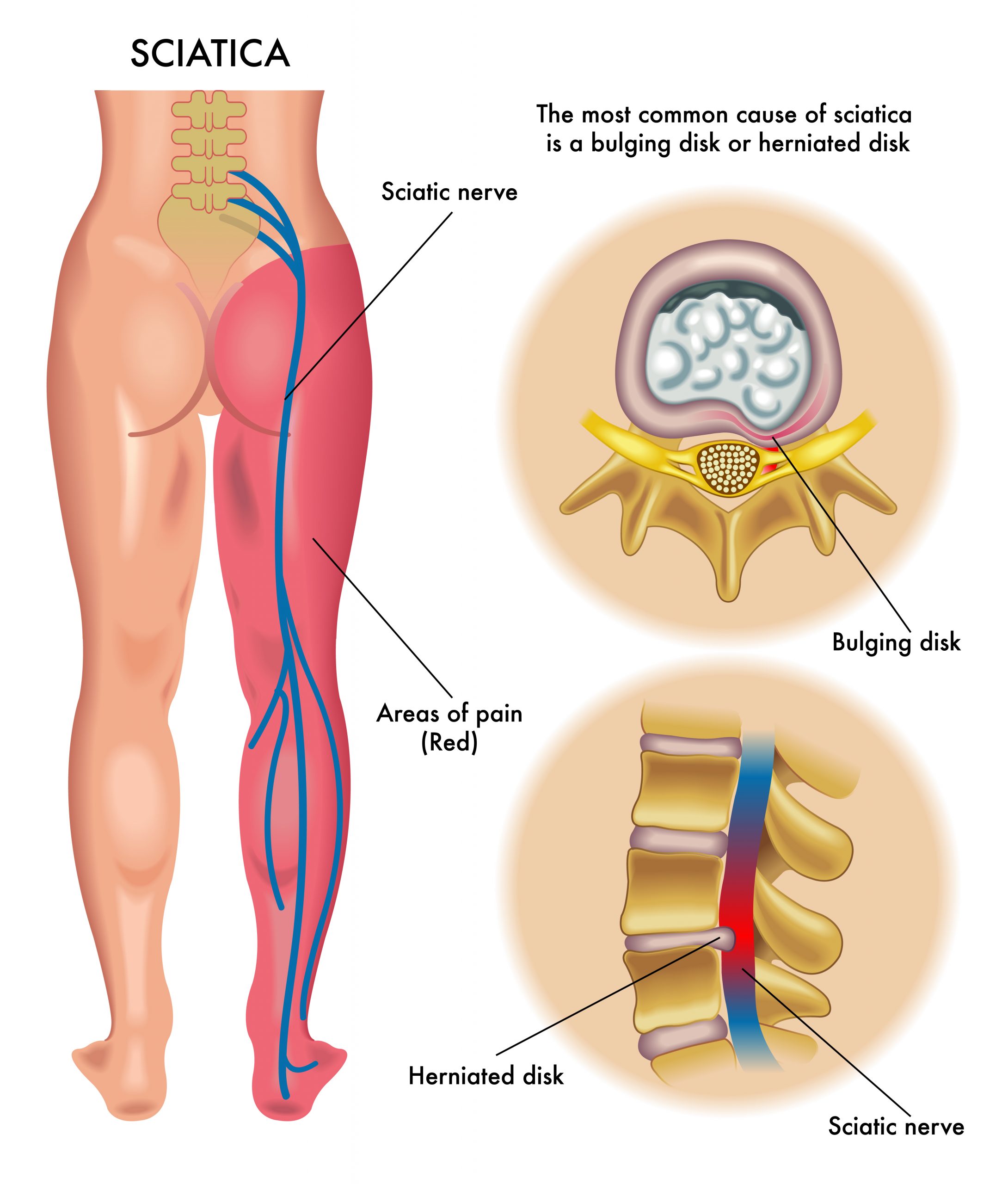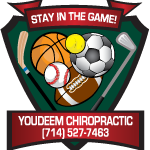Sciatica
Sciatica is pain associated with the sciatic nerve which usually originates higher along the spinal cord when nerve roots become compressed or damaged from narrowing of the vertebral column or from a slipped or herniated disc. Symptoms can include tingling, numbness, or pain, which radiates to the buttocks, legs and feet.
What is the Sciatic Nerve?
The Sciatic nerve is the main nerve traveling down the leg. This nerve starts in the spine and runs down the back of each leg into the feet. This nerve controls the muscles of the back of the knee and lower leg and provides sensation to the back of the thigh, part of the lower leg, and the sole of the foot.
What causes Sciatica
Common causes of Sciatica include:
- Piriformis syndrome – The piriformis muscle, located in the buttocks, becomes tight and or spasmed and irritates the Sciatic nerve.
- Slipped Disc, Herniated Disc, Bulged Disc – A herniated or bulging disc can push out (like squeezing the jelly out of a jelly doughnut) and irritate the nerve root of the sciatic nerve causing sciatica.
- Degenerative Disc Disease
- Spinal Stenosis, narrowing of the canal
What does Sciatica Feel Like?
How Do I Know If I Have Sciatica?
Sciatic pain can vary widely. It may feel like a mild tingling, dull ache, or a burning sensation. Some patients describe it as a “hot poker” or a shooting electrical pain in the buttocks and down the leg. Often times the pain will shoot down the leg into the foot and have accompanied numbness and tingling in the leg and foot. In some cases, the pain is severe enough to make a person unable to move.
The pain most often occurs on one side. Some people have sharp pain in one part of the leg or hip and numbness in other parts. The sensations may also be felt on the back of the calf or on the sole of the foot. The affected leg may feel weak.
It is always important to consult a qualified physician to determine the cause and best course of action for your sciatica. Success of sciatica treatment is determined by the ability of the physician to determine the exact cause of the sciatica and have the tools necessary to treat that underlying cause.
What are My Options for the Treatment of Sciatica?
Your doctor may prescribe different therapies depending on the cause of sciatica. Often times stretching, ice and rest are enough to allow the pain and inflammation associated with sciatica to self resolve. If pain persists longer than a week or two then your doctor may recommend spinal decompression.

How does Spinal Decompression help Sciatica?
Non-Surgical Spinal Decompression slowly lengthens and decompresses the spine, creating negative pressures within the discs. This reversal of pressure creates a vacuum inside the discs that helps to reposition bulging discs and draw extruded disc material back into place, taking pressure off pinched nerves. Spinal experts believe that nutrients, oxygen, and fluids are drawn into the disc to create a revitalized environment conducive to healing.
What are the Treatments Like?
At the beginning of each session, you will be comfortably fitted with a harness designed to achieve optimal decompression of the low back or neck. During a session of spinal decompression, you will notice a slow lengthening of your spine as your discs are gradually decompressed and relieved of pressure. The treatment process is safe and relaxing. While some patients with extensively injured discs have reported mild discomfort during the first few treatment sessions, their discomfort generally subsides upon subsequent visits. A patient safety switch provides an extra safety feature, allowing you to stop at any point should you feel discomfort. Each treatment session lasts approximately 20 minutes. Individual patient results may vary.
What is the Typical Treatment Protocol?
A typical spinal decompression treatment protocol consists of about 15-25 sessions over four to six weeks. Some conditions require fewer visits; some require more. Many patients report relief from their pain and other symptoms during the first few treatment sessions, and most experience dramatic pain relief after completion of their prescribed treatment program.

